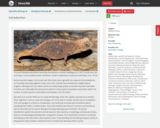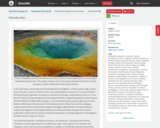1046 Results
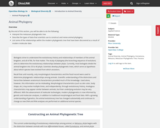
By the end of this section, you will be able to do the following:
Interpret the metazoan phylogenetic tree
Describe the types of data that scientists use to construct and revise animal phylogeny
List some of the relationships within the modern phylogenetic tree that have been discovered as a result of modern molecular data
- Subject:
- Applied Science
- Material Type:
- Module
- Date Added:
- 09/21/2018
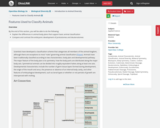
By the end of this section, you will be able to do the following:
Explain the differences in animal body plans that support basic animal classification
Compare and contrast the embryonic development of protostomes and deuterostomes
- Subject:
- Applied Science
- Material Type:
- Module
- Date Added:
- 09/21/2018
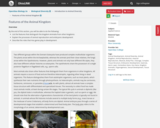
By the end of this section, you will be able to do the following:
List the features that distinguish the kingdom Animalia from other kingdoms
Explain the processes of animal reproduction and embryonic development
Describe the roles that Hox genes play in development
- Subject:
- Applied Science
- Material Type:
- Module
- Date Added:
- 09/21/2018
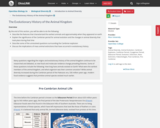
By the end of this section, you will be able to do the following:
Describe the features that characterized the earliest animals and approximately when they appeared on earth
Explain the significance of the Cambrian period for animal evolution and the changes in animal diversity that took place during that time
Describe some of the unresolved questions surrounding the Cambrian explosion
Discuss the implications of mass animal extinctions that have occurred in evolutionary history
- Material Type:
- Module
- Date Added:
- 09/21/2018
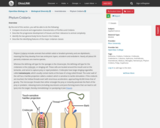
By the end of this section, you will be able to do the following:
Compare structural and organization characteristics of Porifera and Cnidaria
Describe the progressive development of tissues and their relevance to animal complexity
Identify the two general body forms found in the Cnidaria
Describe the identifying features of the major cnidarian classes
- Subject:
- Applied Science
- Material Type:
- Module
- Date Added:
- 09/21/2018
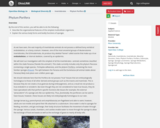
By the end of this section, you will be able to do the following:
Describe the organizational features of the simplest multicellular organisms
Explain the various body forms and bodily functions of sponges
- Subject:
- Applied Science
- Material Type:
- Module
- Date Added:
- 09/21/2018
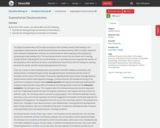
By the end of this section, you will be able to do the following:
Describe the distinguishing characteristics of echinoderms
Describe the distinguishing characteristics of chordates
- Subject:
- Applied Science
- Material Type:
- Module
- Date Added:
- 09/21/2018
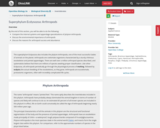
By the end of this section, you will be able to do the following:
Compare the internal systems and appendage specializations of phylum Arthropoda
Discuss the environmental importance of arthropods
Discuss the reasons for arthropod success and abundance
- Subject:
- Applied Science
- Material Type:
- Module
- Date Added:
- 09/21/2018
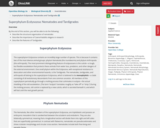
By the end of this section, you will be able to do the following:
Describe the structural organization of nematodes
Describe the importance of Caenorhabditis elegans in research
Describe the features of Tardigrades
- Subject:
- Applied Science
- Material Type:
- Module
- Date Added:
- 09/21/2018
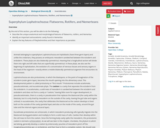
By the end of this section, you will be able to do the following:
Describe the unique anatomical and morphological features of flatworms, rotifers, and Nemertea
Identify an important extracoelomic cavity found in Nemertea
Explain the key features of Platyhelminthes and their importance as parasites
- Subject:
- Applied Science
- Material Type:
- Module
- Date Added:
- 09/21/2018
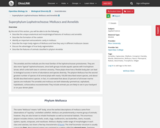
By the end of this section, you will be able to do the following:
Describe the unique anatomical and morphological features of molluscs and annelids
Describe the formation of the coelom
Identify an important extracoelomic cavity in molluscs
Describe the major body regions of Mollusca and how they vary in different molluscan classes
Discuss the advantages of true body segmentation
Describe the features of animals classified in phylum Annelida
- Subject:
- Applied Science
- Material Type:
- Module
- Date Added:
- 09/21/2018
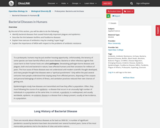
By the end of this section, you will be able to do the following:
Identify bacterial diseases that caused historically important plagues and epidemics
Describe the link between biofilms and foodborne diseases
Explain how overuse of antibiotics may be creating “super bugs”
Explain the importance of MRSA with respect to the problems of antibiotic resistance
- Subject:
- Applied Science
- Material Type:
- Module
- Date Added:
- 09/21/2018
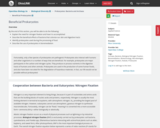
By the end of this section, you will be able to do the following:
Explain the need for nitrogen fixation and how it is accomplished
Describe the beneficial effects of bacteria that colonize our skin and digestive tracts
Identify prokaryotes used during the processing of food
Describe the use of prokaryotes in bioremediation
- Subject:
- Applied Science
- Material Type:
- Module
- Date Added:
- 09/21/2018
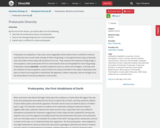
By the end of this section, you will be able to do the following:
Describe the evolutionary history of prokaryotes
Discuss the distinguishing features of extremophiles
Explain why it is difficult to culture prokaryotes
- Subject:
- Applied Science
- Material Type:
- Module
- Date Added:
- 09/21/2018
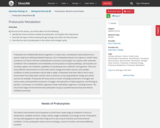
By the end of this section, you will be able to do the following:
Identify the macronutrients needed by prokaryotes, and explain their importance
Describe the ways in which prokaryotes get energy and carbon for life processes
Describe the roles of prokaryotes in the carbon and nitrogen cycles
- Subject:
- Applied Science
- Material Type:
- Module
- Date Added:
- 09/21/2018
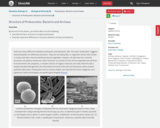
By the end of this section, you will be able to do the following:
Describe the basic structure of a typical prokaryote
Describe important differences in structure between Archaea and Bacteria
- Subject:
- Applied Science
- Material Type:
- Module
- Date Added:
- 09/21/2018

